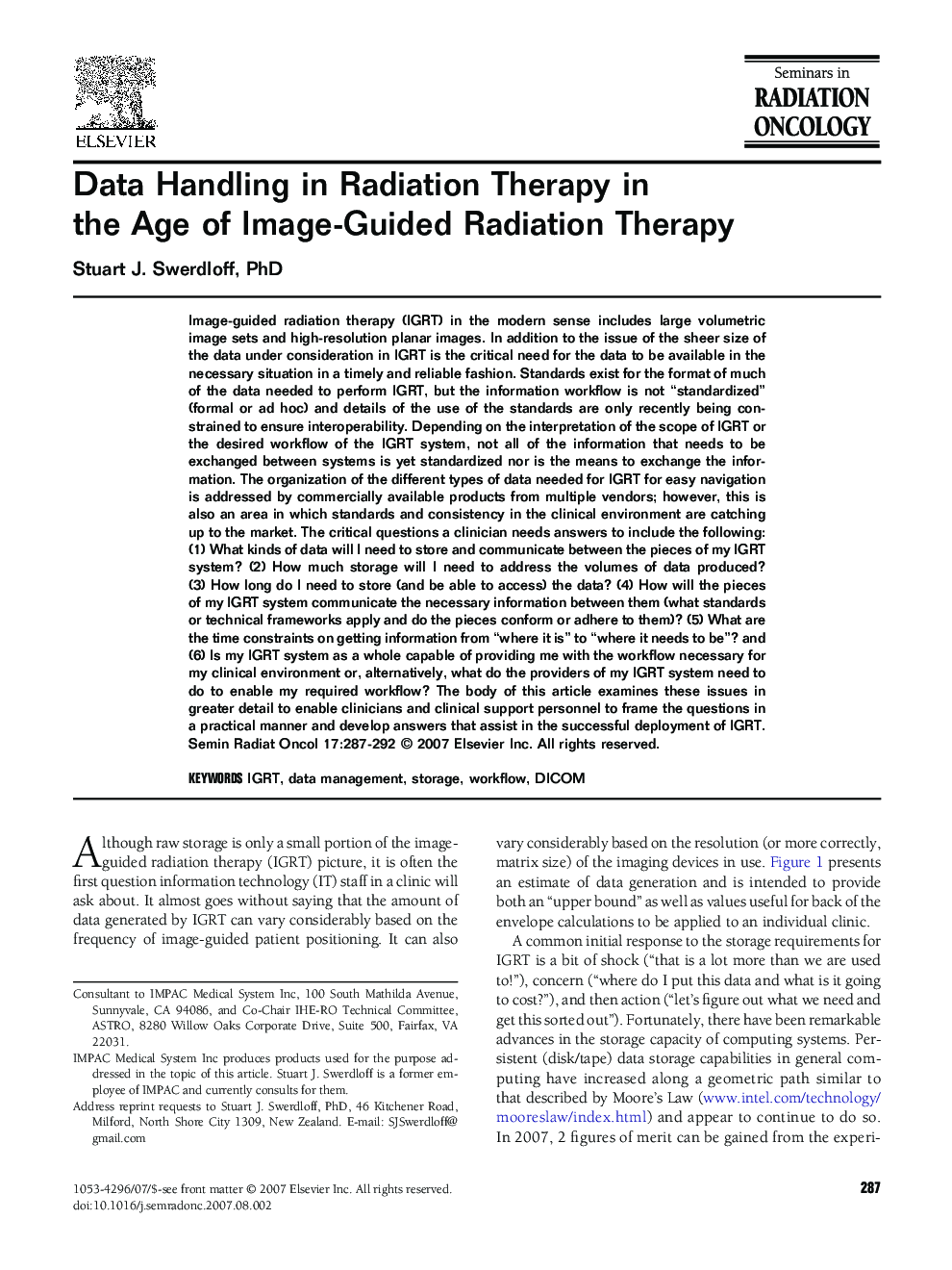| Article ID | Journal | Published Year | Pages | File Type |
|---|---|---|---|---|
| 2738653 | Seminars in Radiation Oncology | 2007 | 6 Pages |
Image-guided radiation therapy (IGRT) in the modern sense includes large volumetric image sets and high-resolution planar images. In addition to the issue of the sheer size of the data under consideration in IGRT is the critical need for the data to be available in the necessary situation in a timely and reliable fashion. Standards exist for the format of much of the data needed to perform IGRT, but the information workflow is not “standardized” (formal or ad hoc) and details of the use of the standards are only recently being constrained to ensure interoperability. Depending on the interpretation of the scope of IGRT or the desired workflow of the IGRT system, not all of the information that needs to be exchanged between systems is yet standardized nor is the means to exchange the information. The organization of the different types of data needed for IGRT for easy navigation is addressed by commercially available products from multiple vendors; however, this is also an area in which standards and consistency in the clinical environment are catching up to the market. The critical questions a clinician needs answers to include the following: (1) What kinds of data will I need to store and communicate between the pieces of my IGRT system? (2) How much storage will I need to address the volumes of data produced? (3) How long do I need to store (and be able to access) the data? (4) How will the pieces of my IGRT system communicate the necessary information between them (what standards or technical frameworks apply and do the pieces conform or adhere to them)? (5) What are the time constraints on getting information from “where it is” to “where it needs to be”? and (6) Is my IGRT system as a whole capable of providing me with the workflow necessary for my clinical environment or, alternatively, what do the providers of my IGRT system need to do to enable my required workflow? The body of this article examines these issues in greater detail to enable clinicians and clinical support personnel to frame the questions in a practical manner and develop answers that assist in the successful deployment of IGRT.
